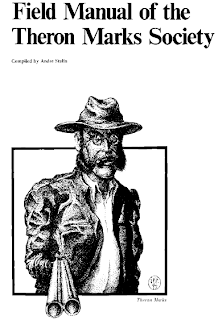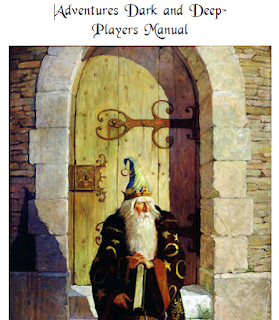And here's another review of an RPG sourcebook -- Laundry Files: Agent's Handbook, a sourcebook to The Laundry RPG.
Let's get this out of the way first: Steganography is the art and science of writing hidden messages; Stenography is the process of writing in shorthand. While it could be argued that very very few write in shorthand these days and would constitute a hidden message, it is an incorrect (though understandable) misuse of the term.
I hope it gets fixed (if it hasn't already been addressed) as soon as possible.Contemporary Urban Fantasy, is one of my favorite genres too. I loved playing Cthulhu Now and Delta Green campaigns way back in the day, and have been intrigued other takes on the genre, from the Ghostbusters RPG, to Tri-Tac's Stalking the Night Fantastic, to both editions of Chill, to BTRC's Code: Black, to the Dresden Files RPG, to this one. I think there's even a HeroQuest 2E one out there, and I've also taken a look at the World of Darkness material for a look at how the big three monsters (Vampires, Werewolves, and Mages) are handled -- though I avoided Hunter for some reason unknown to me.
Anyway, Laundry Files: Agent's Handbook provides a wealth of resources to Players and GMs running the Laundry Files RPG. With a lot of fluff -- filled with telling details from real-life and fictionalized tradecraft, gear, and bureaucracy -- and just enough crunch to add gameplay weight to the source material, this sourcebook will help all parties become acclimatized to Charles Stross's humorous mingling of agency politics and operations, humor, and supernatural monstrosities lurking at the edge of our reality.
Steganography issues aside, the Tradecraft chapter is a must-read. It sets the tone for an operative, and gets certain basics out of the way so that rookie mistakes and questions aren't raised in the middle of a high stakes adventure. Plus, the proper usage of terminology gets players and GMs in the proper mood.
I particularly enjoyed the chapters on Laundry Gear, Bureaucracy, and Training Courses. They emphasize the difference between this type of campaign and the typical Cthulhu-inspired campaign, which often results in scores of dead or insane characters and very few continuing PCs, and they suggest or raise interesting ways that modern technology can be combined with occult knowhow to aid in the fight against the dying of the light.
The layout is clean, and the affectation of images as 'taped on' pictures and tables as 'taped on' reports in dot-matrix printout format helps add to the feel of the setting as well.
I highly recommend this book, not just to players of The Laundry, but to any GMs interested in running campaigns in the Contemporary Urban Fantasy genre.
Oh by the way, The Laundry RPG is apparently powered by the Basic Role-Playing System. That means a lot of Call of Cthulhu source material can be used with it.


















